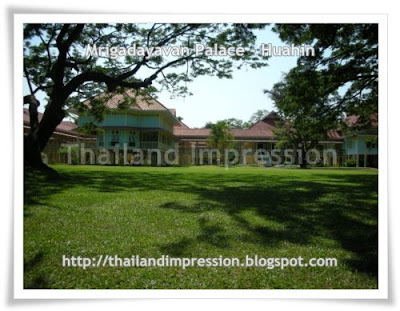Hellfire Pass - Kanchanaburi

Hellfire Pass is the name of a railway cutting, famed for its cost in life, on the Death Railway in Thailand, known by the Japanese as Konyu cutting. It was built in World War II, in part by POWs. Work by torchlight at night gave the pass its name.

History
The Konyu cutting was a particularly difficult section of the line to build due to it being the largest rock cutting on the railway, coupled with its general remoteness and the lack of proper construction tools during building. A tunnel would have been possible to build instead of a cutting, but this could only be constructed at the two ends at any one time, whereas the cutting could be constructed at all points simultaneously despite the excess effort required by the POWs.
The Australian, British, Dutch and other allied Prisoners of War were required by the Japanese to work 18 hours a day to complete the cutting. Sixty nine men were beaten to death by Japanese and Korean guards in the six weeks it took to build the cutting, and many more died from cholera, dysentery, starvation, and exhaustion (Wigmore 568). However, the majority of deaths occurred amongst labourers whom the Japanese enticed to come to help build the line with promises of good jobs. These labourers, mostly Malayans (Chinese, Malays and Tamils from Malaya), suffered mostly the same as the POWs at the hands of the Japanese. The Japanese kept no records of these deaths.
The railway was never built to a level of lasting permanence and was frequently bombed by the Royal Air Force during the Burma Campaign. After the war, all but the present section was closed. There are currently no plans to reopen it.

Present day
There are no longer any trains running on this stretch of the line. The nearest railway station is at Nam Tok, where trains of the State Railway of Thailand can be taken for a trip over the famous Whampo Viaduct and across the bridge over the River Kwai to Kanchanaburi, which is the nearest major town and tourist base. Visitors to the museum usually base themselves in Kanchanaburi. It is possible to roll into one day a trip to the Erawan Waterfall in the morning, followed by a visit to Hellfire Pass and its museum in the afternoon, and then catch the train back to Kanchanaburi to cross the famous bridge around sunset.
There is a museum co-sponsored by the Thai and Australian governments at the site to commemorate the suffering of those involved in the construction of the railway. It was opened by the then Prime Minister of Australia, John Howard. As a part of the museum experience, it is possible to walk through the cutting itself and along a section of the former railway track bed. An audio tour including recorded memories of surviving POWs is available at the museum.

In 2006, proposals to create a railway network linking eight south-east Asia countries would see a railway link restored between Thailand and Myanmar. It is not clear if this would follow the original Death Railway route through Hellfire Pass, since this route was necessarily built quickly and to low standard of curves and gradients.
source : http://en.wikipedia.org/wiki/Hellfire_Pass



Comments
Post a Comment